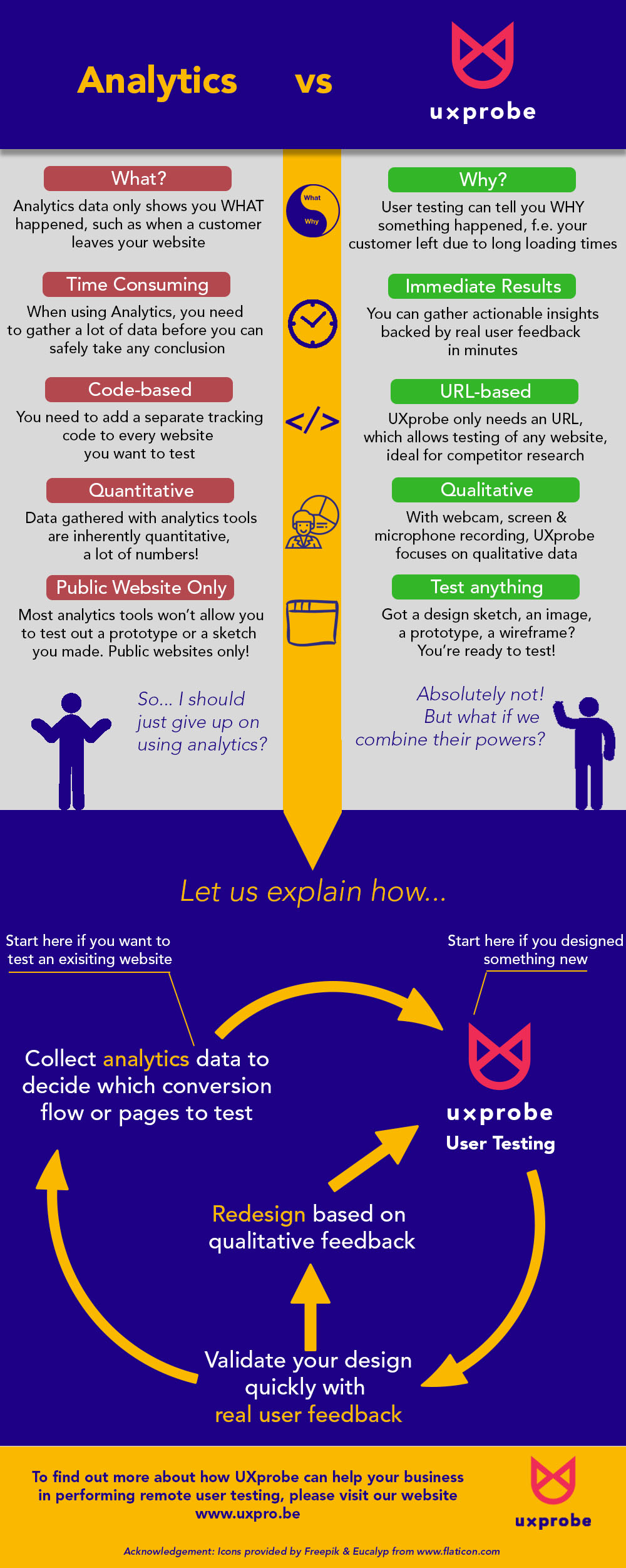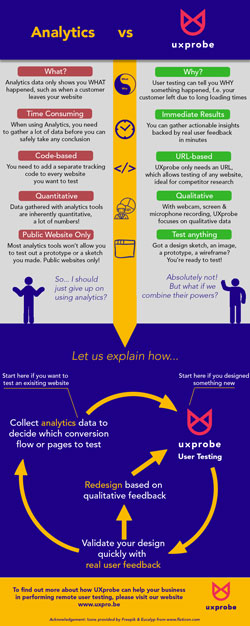Well, the short answer is no.
But hold on! Before you click away, allow me to take this opportunity and explain the difference between UXprobe & analytics tools, and how their powers can be combined so you can become even more effective in optimizing your website!
I’m often asked about the difference between UXprobe Usability Testing and analytics. They’re both tools that can be used to perform user research. But they’re a little bit different in what data you’re gathering, how you gather it, and what that data describes.
So, analytics, you can think about as seeing WHAT your users do “in the wild;” so seeing how they’re actually using your site. You would use a tool like Google Analytics that would track how many visitors arrived at your site, what they do on your site, how long they stay… things like that. This data only shows when someone arrived and when they left. But it can’t tell you why they came, what their preconceptions were, what their objectives were, and most importantly why they did or didn’t buy.
For this, you need a qualitative usability test, in which users actually interact with your website and give you immediate feedback on their experience and satisfaction. With usability testing, you’re asking somebody who is representative of your user base to perform tasks that you believe your users actually perform on your site and then you can see where that process breaks down, how many users have difficulty with it, how quickly they can complete tasks, and how satisfied they feel about those tasks after they’ve completed them.
Be aware, usability testing is NOT a replacement for analytics (or the other way around). In fact, they support each other. So with analytics, you see which flows are problematic on your website, then you can define scenarios for usability testing around that problem, understand why the issue occurs and do a redesign. Afterwards, you can, of course, validate this new design with a broader group of users through analytics.
Both are really good supplements to your qualitative user research methodologies, and both can help you identify issues with your system and prioritize which of those issues need to be fixed.
To share this explanation easily with anyone that tells you that UXprobe is just another analytics tool, you can use this infographic!

ABOUT THE AUTHOR

Jan Moons
UX expert & co-founder at UXprobe



